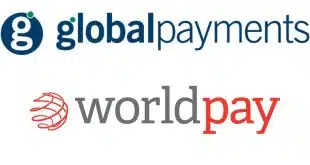The number of payment facilitators is growing rapidly, with technology platforms and independent software vendors alike increasingly taking on the role. Yet confusion remains about just how a payment facilitator—or payfac, in industry parlance—differs from a conventional merchant acquirer or even from a marketplace.
That confusion clouds the responsibilities payfacs must assume, warned acquiring experts Deana Rich and Holli Targan in a presentation they gave at a payments conference last week.

Payment facilitators have been around for years, with PayPal Holdings Inc. being an early example of companies processing on their own merchant account for submerchants. But the category began to heat up early this decade as players saw advantages in being able to sign up small merchants by the score, while the merchants found appeal in being able to start accepting card payments without having to obtain their own merchant account.
The number of payfacs grew from 153 in 2013 to an estimated 662 last year, according to data from Double Diamond Payments Research, Centennial, Colo. The firm expects that number to expand 47% this year, reaching 973. Payment volume, meanwhile, ballooned from 2013’s $6.9 billion to an estimated $39.7 billion in 2016. Volume this year will hit $58.4 billion, Double Diamond projects. Those numbers exclude volume for Stripe Inc., Square Inc., and PayPal.
But Rich and Targan, who spoke at the MidWest Acquirers Association annual meeting in Chicago, warned many misconceptions are rife in the industry. For one thing, confusion persists over how a payfac differs from a marketplace, said Rich, principal at Van Nuys, Calif.-based Rich Consulting.
Using the example of Uber and online market Etsy, Rich explained that it is Etsy that is a payfac, while Uber is a marketplace. The difference is that consumers who buy from crafts creators on Etsy deal with the seller, with Etsy facilitating payment. “With Uber, you don’t find the driver” on your card statement, she said, “you deal with Uber. Uber is on the statement.” Key questions to determine who is a payfac, Rich added, include: who is the owner of the product or service; who handles shipping; and who shows up on the statement.
But that’s not where the confusion ends. While more and more companies are taking on the role of a payment facilitator, it’s important for these newly minted payfacs to understand the risks and liabilities they are assuming, warned Targan, a partner at Detroit-based law firm Jaffe, Raitt, Heuer, & Weiss who specializes in acquiring issues. “You have to be up on your game,” she said.
The payment-facilitator model is attractive because it offers more control over both merchants and settlement, since the payfac, rather than an acquiring bank, contracts directly with the submerchant, Targan pointed out. But that direct relationship also means the payfac is liable for chargebacks, data breaches, fraud, and other risks, she said.
The payfac must also ensure it is following network rules as well as state and federal law. Beyond that, it needs to monitor its submerchants closely. “The compliance burden is pretty heavy,” Targan cautioned.
Not so heavy, though, that the ranks of payfacs aren’t swelling every year.





